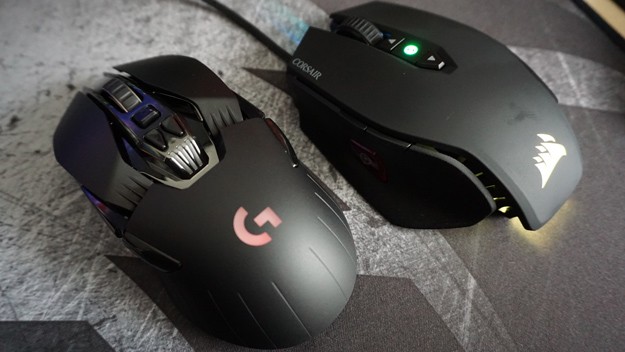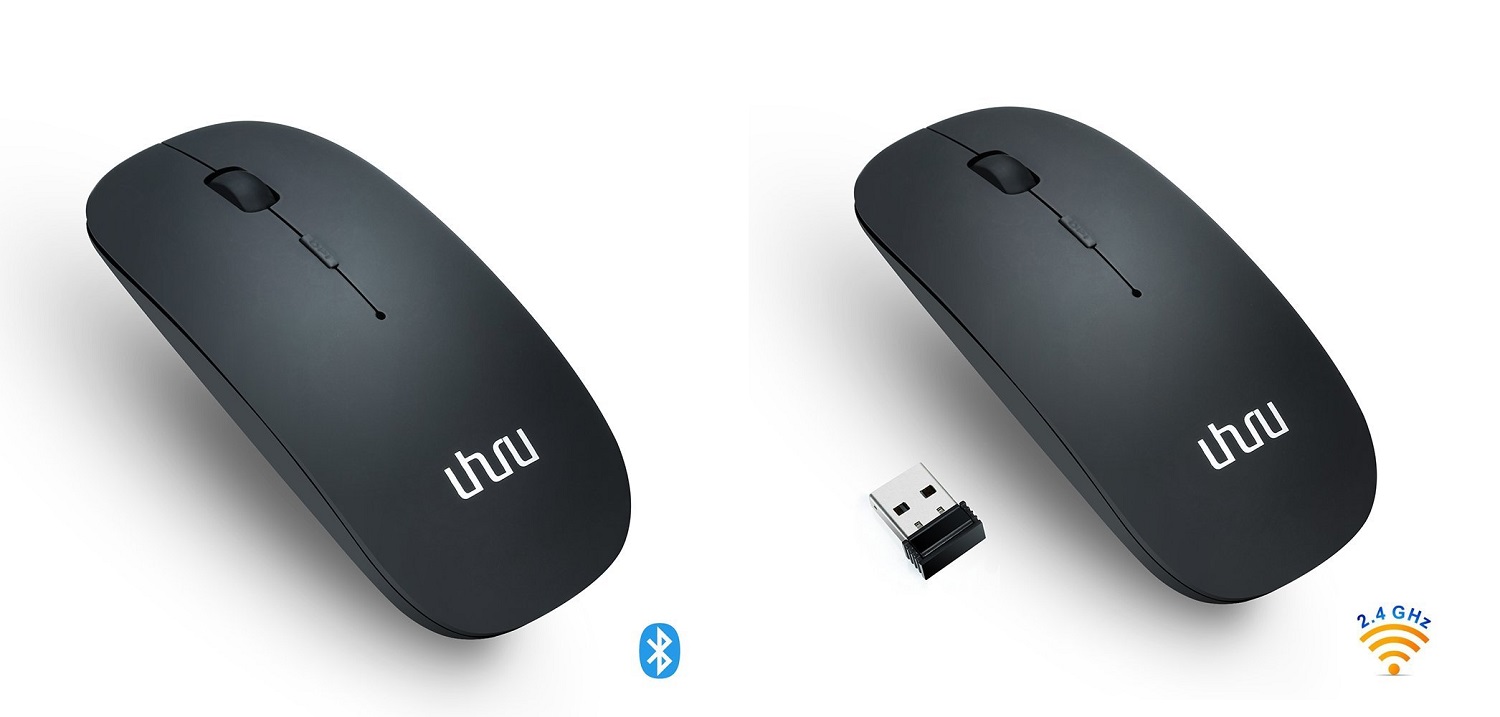Wired USB Computer Mouse: Optical versus Laser Mouse
The wired USB optical mouse is still the more popular of the lot. Even this, though, comes in two categories: Laser and Optical. The technology behind both is so similar to make them indistinguishable. Of the two, the Laser mouse is the newer technology, but don’t be deceived. The Optical mouse is still just as good, if not better in some respects. Let’s get this straight: Optical and Laser mice are not restricted to just wired but also ship for wireless mice. Optical mice are prevalent in the market, especially for everyday tasks such as home and office use. Optical mice use an infrared LED light, usually red, as a light source. Laser mice on their part use an invisible infrared Laser source. An optical mouse has about 2 buttons minimum and about 5 buttons maximum. A laser mouse, on the other hand, is more advanced and can have as many as 12 programmable buttons. These work in concert with the wheel to allow you navigate your computer. While it’s disputable by some, the optical sensors are considered the superior of the two. They are supposedly more reliable and precise and have higher perfect control speeds and higher malfunction speeds. Optical mice are said not to fair that well with highly reflective surfaces. It is said that laser mice can work perfectly on practically any given hard surface. Unfortunately, on soft surfaces with more depth, they pick up a lot of information leading to discrepancies with how they track your movements.
Wired versus Wireless USB Computer Mouse: Pros and Cons
Lag/Responsiveness: This is where the Wired USB Mouse shines. The responsiveness of the wired mouse is undisputed compared to their tailless cousins. Being connected to the computer hardware apparently gives it an advantage that translates to better pointer speed, mouse acceleration, control/malfunction speed. The new breed of wireless mice, however, upped their responsiveness game to a whole new level. The difference is marginal, if you can feel it, that is. Cost: Unless you’re looking for high-end mice, the wired USB mouse is cheaper than the wireless USB mouse. They also don’t need charging or buying new batteries periodically. In the long run, a one-time investment in a wired mouse beats having to incur extra costs and the inconvenience of owning a wireless mouse. However, these days, wired and wireless mice are more or less the same asking price. The rest is dependent on brand, quality, and other market forces. More to that, rechargeable batteries cut back on costs. Interference: Wired Mice, unlike Bluetooth and Wifi Mice, don’t create any interference. Multiple Bluetooth devices might once in a while cross wires and turn off for a little while. The same goes for RF Mice which can mess up your Wifi connection. On the plus side, this isn’t something that often happens, but it might, just so you know. Power usage/Battery: Another thing not to worry about with wired mice is a power source. With a wired mouse drawing its power from the PC, it edges out its rivals which depend on batteries, rechargeable and otherwise. In that regard, Laser mice consume less power than their Optical cousins. Also, note that standard mice will consume less power, by having fewer features. USB Ports: On the downside, a wired mouse calls first dibs on your USB port. Same goes for RF mice and their WiFi receivers. In the process, this takes one port out of commission at any given time. Newer laptops and slim notebooks usually have ever fewer USB ports, to begin with. It can be quite the inconvenience to have to unplug the mouse whenever you need an extra port. A major brand, Logitech’s Unifying Technology lets you pair multiple devices using just one USB receiver. It would save you the extra USB ports. Unfortunately, you will have to buy only Logitech devices, if you don’t mind it. Workspace Clutter/Mobility: Some people take offence at having excess wires crisscrossing a workstation. Also, you often need to create some space for a mouse pad. Unlike the wireless mouse, you don’t have the luxury of placing the mouse pad somewhere out-of-the-way. On top of which, the wire can only stretch so far. All in all, we feel this messes up with the ergonomics of the device.
Verdict:4.5/1
Winner: Wired USB Mouse
Wireless Computer Mouse
Like the Wired Mouse, the Wireless Computer Mouse also comes in both Laser and Optical variants. Both operate at 2.4 GHz frequency and a range of about 30 feet. Although one would wonder why anyone would wish to use a mouse from across the room, but who are we to judge? Being wireless, these mice require batteries (Usually AAA or AA rechargeable and otherwise) to operate. To further break down the categorization, we also have the Bluetooth and RF (Wifi) computer mouse.
RF/Wifi versus Bluetooth Mouse
The RF wireless mouse uses a radio frequency (RF) to connect to a computer. It works in concert with a Nano/USB Receiver/RF transmitter which plugs into a USB port. The setup is basically Plug and Play. At the bottom of the mouse, there’s a small On/Off switch. Use this to power down the mouse when not in use and then back on when the need arises. While this might appear to be common sense, we would also like to clarify that the USB receiver has to remain plugged in when the RF mouse is in use. Lose/misplace this USB receiver, and the mouse is practically useless. And no, you can’t get a replacement receiver. The Bluetooth Mouse differs only slightly in how it connects to your computer. Connecting to a computer shouldn’t be a problem if you have any experience pairing a Bluetooth device. This is something most of us have done at some point in the past. A Bluetooth mouse would be perfect if you have few USB ports. Similarly, an RF mouse is a lifesaver if your computer doesn’t support Bluetooth, or when your Bluetooth drivers are acting up. Bluetooth works wonders when you have multiple devices and prefer to use one mouse for all. Or if you have few USB ports to dedicate to a mouse.
Wifi/RF Mouse versus Bluetooth Mouse: Pros and Cons
Lag/Responsiveness: On boot up, a Bluetooth Mouse will take a few seconds longer to start up compared to an RF mouse. The same happens when coming out of sleep. It’s also a general belief that an RF mouse offers better responsiveness. Users have also commented that once in a while Bluetooth mice disconnect abruptly. However, this is debatable and an even split among users. USB Ports: The RF mouse requires a dedicated USB port for the USB receiver/Transmitter. If you have few USB ports, this might become an issue. The Bluetooth mouse doesn’t require extra peripherals and hence takes this round hands down. Power usage/Battery: RF and Bluetooth mice use AA and AAA batteries. Much as it’s a nuisance to purchase non-rechargeable batteries, it’s still an option. Battery duration for both mostly depends on usage and the extra functionalities of extra buttons. Some users believe that as Bluetooth requires two-way communication, a Bluetooth mouse has to stay ON for longer spells to maintain a connection. Otherwise, it would take precious seconds to reconnect. This consumes more battery power than its RF counterpart. Newer Bluetooth standards i.e Bluetooth 4 have low emission designed for low energy and latency. This evens the playing field by providing much-needed battery efficiency. Cost: Proprietary Bluetooth SIG qualification costs drive the price of Bluetooth devices upward. This is coupled with other various costs of materials, which isn’t the case with RF mice. This might have played a hand in the scarcity of Bluetooth mice on the market. However, recent years have seen the emergence of affordable computer mice at par with its RF counterparts. Interoperability: A limitation to the RF computer mouse is that it can only connect to one device at a time. It also translates only devices with USB ports. Bluetooth, on the other hand, provides interoperability with multiple devices. The same Bluetooth mouse will work with devices implementing the HID profile. e.g Wireless mouse, keyboard, smartphone, tablet, computer, e.t.c. Interference: As stated earlier, both Bluetooth and RF mice operate within the 2.4 GHz spectrum. At some point, frequency congestion is bound to occur. It will be evident from reduced Internet speeds, erratic wireless device behavior, e.t.c. But even so, this shouldn’t be the norm, much less with Bluetooth devices. If it does happen, you might have to get do some tinkering. You can change the port for your USB receiver and/or change the channel of your router.
Verdict: 3/3
Winner: Tie!
Mouse user reviews
Computer Mouse users are split half and half in their opinions. Get ready to read fervent endorsements and ruthless diatribe: optical versus laser, wired versus, wireless and Bluetooth versus RF. There’s talk of DPI/CPI (Dots Per Inch/Count Per Inch), Polling rate and all that mumbo-jumbo. At the end of the day, the info dump will drive you crazy. Our best advice is to create your own user experience. Try them all out and see what works for you. User reviews are simply personal opinions. The best we can do is show you all angles as then let you make the final decision. Happy hunting! Maximum effort!



